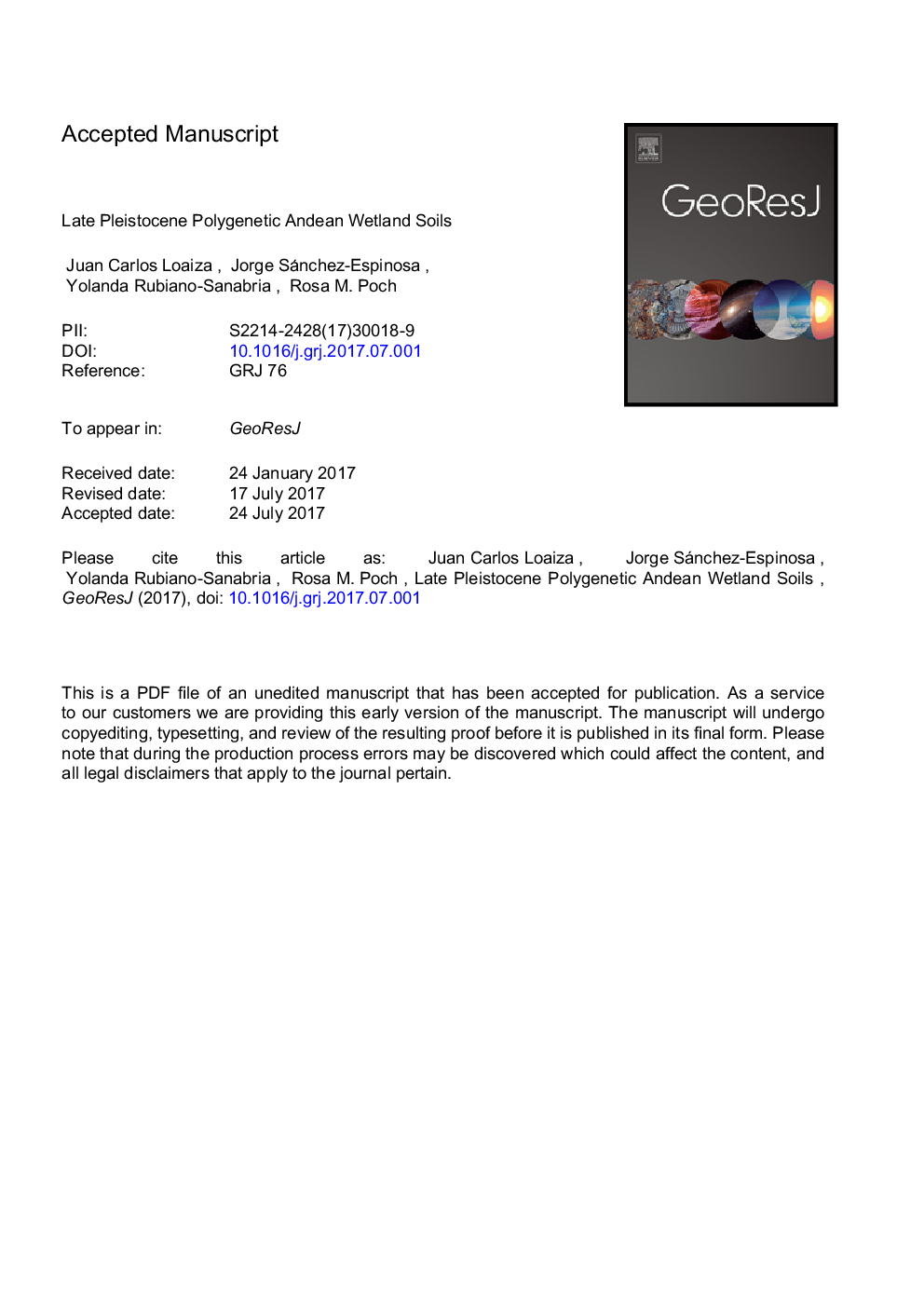| کد مقاله | کد نشریه | سال انتشار | مقاله انگلیسی | نسخه تمام متن |
|---|---|---|---|---|
| 5779190 | 1634291 | 2017 | 49 صفحه PDF | دانلود رایگان |
عنوان انگلیسی مقاله ISI
Late pleistocene polygenetic Andean wetland soils
ترجمه فارسی عنوان
خاکستر تالاب اندی چندگانه اندام پسین
دانلود مقاله + سفارش ترجمه
دانلود مقاله ISI انگلیسی
رایگان برای ایرانیان
کلمات کلیدی
موضوعات مرتبط
مهندسی و علوم پایه
علوم زمین و سیارات
علم هواشناسی
چکیده انگلیسی
The Fusagasuga megafan is located in the Sumapaz River catchment (main tributary of the Magdalena River) which drains into the Sumapaz moorland. The soils show non consistent hydromorphic palaeofeatures that may be related to recent tectonics, therefore a study was conducted to gain insight into the paleoenvironment of the area, in particular the paleohydrology. We studied 6 profiles under 4 different geomorphological positions: structural eroded mountain, axis, length and base of the alluvial megafan (depositional foothills). Medium-textured Lithic Melanudands are located in a steep high mountain (anticline structural slope), Silty loam Ultic Melanudands are developed from volcanic ashes over thick medium-grained sandstones in the transition mountain to alluvial megafan, very fine-textured Typic Paleudalfs with Bt Horizons (42-85% clay) are found around the middle and proximal parts of the megafan, that become Typic Haplustalfs at the distal parts of the megafan. Kaolinite is the dominant clay in all soils, followed by halloisite, goethite and traces of vermiculite and quartz. Quartz and feldspars dominate the sand fraction, together with amphiboles and volcanic glass chemically weathered epidote in small quantities. Soils are mainly acidic, with a high Al saturation and a low base saturation. Clay illuviation is shown by hypocoatings and microlaminated clay coatings. Different degrees of hydromorphism are observed with gleyic to stagnic patterns. Some of the redoximorphic features are related to the current pore system and others to palaeoenvironmental conditions often associated to old clay coatings. The most clayey soils show striated, undifferenciated, speckled b-fabrics and frequent coatings, and some others point to ferrolysis as iron-depleted hypocoatings and low anisotropic clay coatings along pores, an observation supported by mineralogical data. The morphological and micromorphological redoximorphic features allow us to explain the paleoevolution of the alluvial megafan.
ناشر
Database: Elsevier - ScienceDirect (ساینس دایرکت)
Journal: GeoResJ - Volume 14, December 2017, Pages 20-35
Journal: GeoResJ - Volume 14, December 2017, Pages 20-35
نویسندگان
Juan C. Loaiza, Jorge Sánchez-Espinosa, Yolanda Rubiano-Sanabria, Rosa M. Poch,
